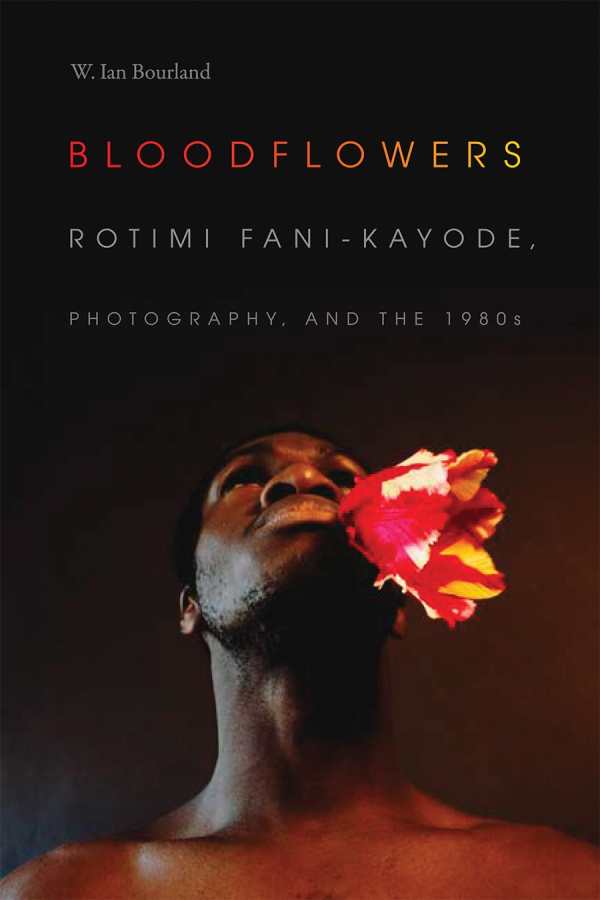Bloodflowers
Rotimi Fani-Kayode, Photography, and the 1980s
Bloodflowers is a nuanced, scholarly analysis of the brief but influential career of photographer Rotimi Fani-Kayode, whose family fled Nigeria’s 1960s civil war for London. He subsequently lived in Washington and New York until his death in 1989. W. Ian Bourland explores Fani-Kayode’s intense life and art along many historical and theoretical arcs and argues that he deserves wider consideration as an important figure in African diasporic art, LGBT/queer culture, and contemporary art.
Photographs are plentiful and essential in decoding the multiple layers of symbolism and references. Fani-Kayode’s images most often feature homoerotic portraits of young black men, reverberating with surrealist meaning, Romanticism, Yoruban and Christian iconography, and art historical references. Later photographs are the most complex, involving elaborately staged tableaux laden with fruit, flowers, and masks, evocations of Baroque and still life paintings, and experimentation with color and antique printing processes. These final works are intriguingly analyzed in terms of their compositional mechanics and talismanic invocation of other worlds in the face of the AIDS crisis.
Bourland systematically and eloquently explores how these images express the artist’s unique and sophisticated vision, celebrating the beauty of the male body and gay sexuality and challenging traditional depictions of gender, race, spirituality, and African/colonial subjects. The writing is dense, semiotics-rich, and spiked with references to cultural theory and philosophy. However, it is rewarding to be immersed so deeply and to learn of the counter-culture milieu in which Fani-Kayode made his art.
As part of the South London art scene, Fani-Kayode did not achieve the fame and commercial success that his New York contemporaries like Jean-Michel Basquiat, Keith Haring, and Robert Mapplethorpe received. The latter’s photographs are compared to Fani-Kayode’s several times in the book as depicting a more hardcore, more fetishist portrayal of gay and black men. In contrast, Bourland cites his subject’s work as richer and less formulaic, with a more iconoclastic vision of individual identity, sexuality, and beauty. Bourland’s book is a welcome showcase and exploration of Fani-Kayode’s work, especially in these times of renewed homophobia and racism.
Reviewed by
Rachel Jagareski
Disclosure: This article is not an endorsement, but a review. The publisher of this book provided free copies of the book to have their book reviewed by a professional reviewer. No fee was paid by the publisher for this review. Foreword Reviews only recommends books that we love. Foreword Magazine, Inc. is disclosing this in accordance with the Federal Trade Commission’s 16 CFR, Part 255.

